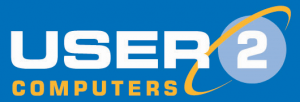In this insight, we look at what a virtual machine is, where to get one, what it can be used for, plus a few of the main pros and cons.
What Is A Virtual Computer?
A virtual machine/virtual computer is a software-based simulation of a computer system, generally created and run on cloud-based infrastructure, and managed and maintained by cloud service providers. Virtual computers can be accessed over the internet, and users can run applications and store data on these virtual machines just as they would on a physical computer.
Where And How?
There are several ways to get access to a virtual computer:
– Local setup. You can create a virtual computer on your own physical machine using virtualization software, such as VirtualBox or VMware. This requires installing the virtualization software and setting up a virtual machine using a compatible operating system.
– Cloud-based virtual machines. You can also rent a virtual computer from a cloud service provider, such as Amazon Web Services (AWS), Microsoft Azure, or Google Cloud. This allows you to run a virtual machine in the cloud and access it from anywhere with an internet connection.
– Hosted virtual desktops. Some organisations offer hosted virtual desktops, which are virtual machines that are hosted by the provider and accessible to users over the internet. These can be a cost-effective option for organisations that need to provide virtual desktops to employees or contractors.
To get a virtual computer, you’ll need to choose the type of virtual machine that meets your needs, then follow the specific instructions for setting it up and accessing it. Some virtualisation software, such as VirtualBox, is free and open source, while others, such as VMware, require a paid license. Cloud-based virtual machines are usually priced on a pay-per-use basis, based on the amount of resources you use. Hosted virtual desktops can be priced on a monthly or annual basis and may also require a per-user license.
Why Use A Virtual Machine (The Pros)?
There are several reasons why you may choose to use a virtual computer. For example:
– Testing and development. Virtual computers can be used to test applications and operating systems without affecting the host system, making it easier to identify and fix bugs.
– Isolation and security. Virtual computers can be used to create isolated environments that are separate from the host system, reducing the risk of contamination from malware or other security threats.
– Cost-effectiveness. By running multiple virtual computers on a single physical machine, organisations can reduce hardware costs and increase the utilisation of their computing resources.
– Scalability. Virtual computers can be easily scaled up or down based on changing needs, allowing organisations to quickly respond to changing demands for computing resources.
– Accessibility. With cloud-based virtual computers, users can access their virtual machines from anywhere with an internet connection, making it easier for remote workers and teams to collaborate and access their applications and data.
– Compatibility. Virtual computers can be used to run older software or operating systems that are no longer compatible with current hardware, thereby preserving access to legacy applications.
– Portability. Virtual machines can be easily transferred from one physical machine to another, making it easier to migrate to new hardware or migrate to the cloud.
Examples
Examples of uses for virtual computers, therefore, include:
– Running multiple operating systems on a single physical machine.
– Providing virtual desktop infrastructure (VDI).
– Hosting web applications.
– Testing and development of software applications.
– Provisioning isolated environments for security purposes, such as penetration testing.
Reducing The Risk of Being Tracked
Using a virtual computer can also increase privacy and reduce the risk of being tracked in several ways. For example:
– By using a virtual machine, users can separate their online activities from their main computer, making it more difficult for others to track their activity.
– A virtual machine can be assigned a different IP address than the host computer, making it more difficult for websites and online services to track the user’s location and online activity.
– Virtual machines can be wiped clean and reset to their original state, effectively erasing any evidence of previous activities. This can be useful for users who want to reduce the risk of tracking by temporary files, browser history, and other forms of digital footprints.
– Virtual machines can be used to run alternative operating systems, such as a privacy-focused version of Linux, that are designed to protect user privacy and security.
However, it’s important to note that using a virtual computer does not guarantee complete anonymity and privacy. Online activities can still be monitored or tracked by various entities, including internet service providers, governments, and malicious actors. It’s important to use a combination of privacy and security tools, such as encrypted communication and VPNs, to maximize privacy and security when using a virtual computer or any other device connected to the internet.
The Cons Of Using A Virtual Computer
There are, of course, quite a few disadvantages to using virtual computers. These include, for example:
– Performance issues. Virtual machines can sometimes run slower than physical machines, particularly when running resource-intensive applications or when there is contention for hardware resources.
– Complexity. The use of virtual computers can be complex and requires a certain level of technical expertise to set up and maintain.
– Dependence on host system. Virtual machines are dependent on the host system, and if the host system fails or experiences problems, it can affect the performance and availability of the virtual machines.
– Resource overhead. Running virtual machines requires additional resources, such as memory and processing power, which can add to the overall cost of running virtual machines.
– Networking limitations. Virtual machines can have limited networking capabilities, particularly when using bridged networking, which can make it more difficult to configure and manage virtual machine networking.
– Data storage. Virtual machines can have limited storage capacity, which can be a concern for users who need to store large amounts of data.
– Licensing. Some software applications and operating systems have licensing restrictions that limit their use in virtual environments, which can be a concern for organizations that want to use virtual machines for these purposes.
– Security concerns. Virtual machines can be vulnerable to security threats, just like physical machines, and require ongoing maintenance and security measures to minimize risks.
What Does This Mean For Your Business?
Virtual computers, therefore, have a number of benefits and drawbacks for businesses, thus the decision of whether to use them or not will depend on the specific needs and circumstances of each organisation. Virtual computers can be a cost-effective solution for businesses that need to run multiple operating systems or applications, as they allow for better utilisation of hardware resources and reduce hardware costs. They also offer improved accessibility and scalability, making it easier for remote workers and teams to collaborate and access their applications and data. However, it’s also worth remembering that virtual computers can be complex to set up and maintain and may not offer the same performance as physical machines, particularly when running resource-intensive applications.
Businesses should also be aware of the potential for security threats and be prepared to take appropriate measures to secure their virtual machines. Ultimately, whether a virtual computer is the right choice for your business will depend on your specific needs and budget, as well as your technical expertise and resources. It may be helpful to consult with an expert or a cloud service provider to determine the best solution for your business.




